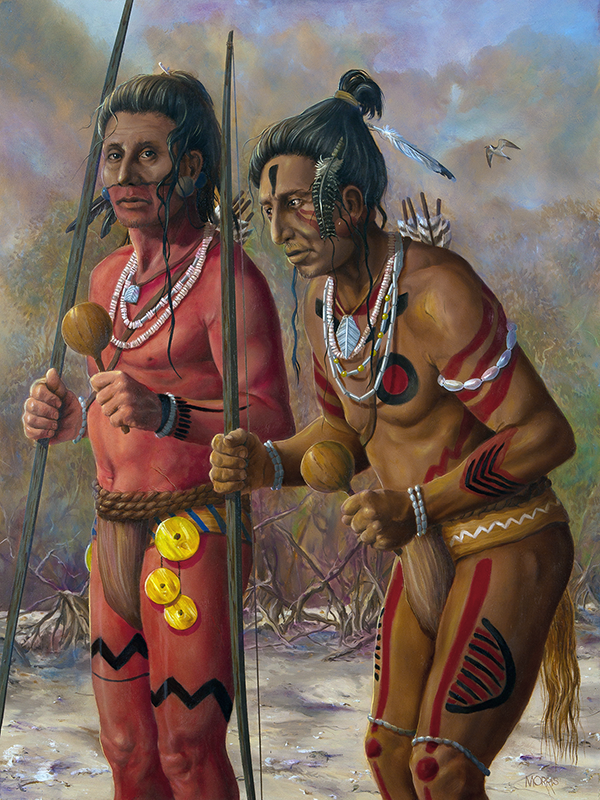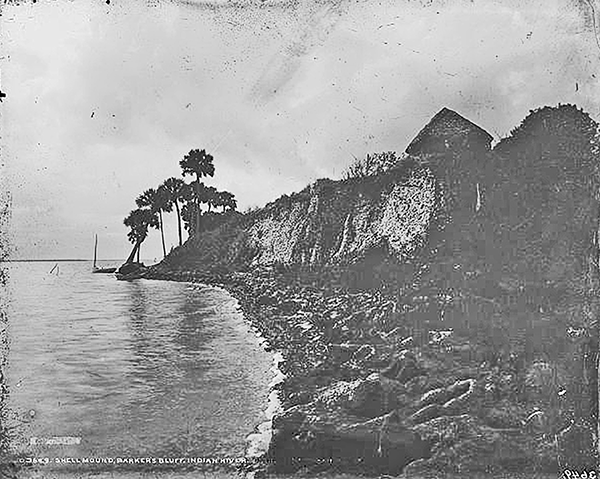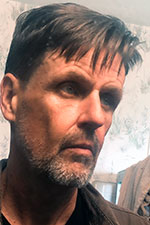Ais, 15,000-year natives, topic of Saturday’s History Festival

When the Spaniards arrived on shores of the Treasure Coast 500 years ago, an ancient people known as the Ais greeted them to the land they and their ancestors had lived on for thousands of years.
The Ais and their ancestors had been living on this coast for perhaps as long as 15,000 years, says an archaeologist who has studied them and uncovered some of their settlements over the last two decades. “It’s an interesting phenomenon,’’ says Alan Brech of Palm Bay, who will be one of the featured speakers at the Treasure Coast History Festival in Fort Pierce on Saturday. “As a researcher, I’m fortunate because there’s a lot to do and it’s easy to make contributions because so little has been done.’’

“The Ais people deserve more attention than they get.’’
The name Ais came from the name interpreted by the Spanish to reference the chief, or cacique. Thus, the Spanish named the main waterway through the Treasure Coast the Rio de Ais while the English called it the Indian River.
Brech’s presentation Saturday on “The Ais Natives of the Treasure Coast’’ will be given at 11 a.m. in the Black Box of the Sunrise Theatre, 117 S. Second St., Fort Pierce. The presentation is free and attendance is on a first-come, first served basis.
The Ais, a fishing people, controlled some 150 miles of the coast from modern-day Cape Canaveral in the north to the St. Lucie Inlet in the south. Early Spaniards recorded encountering them but it was the Englishman Jonathan Dickinson, shipwrecked off the coast by a hurricane in 1696, who gave firsthand accounts of them. The Ais lived in towns consisting of small collections of huts framed with sticks and covered on the sides with fronds.

Brech, in an article co-published in the Florida Anthroplogist in 2010, located the Ais’ paramount town at the Kroegel Homestead (formerly Barker’s Bluff) near Sebastian. The site once contained a large shell mound known as a midden, which consisted of oyster shells the Ais had discarded over centuries. By 1913, the shell mounded had been leveled, destroying centuries of Ais history.
For years, the paramount town Dickinson referred to as Jece was thought to be farther south. But Brech and co-researcher J.F. Lanham put it at the Kroegel Homestead, asserting that earlier locations were based on sightings of an existing inlet instead of an inlet that had been closed at winter beach after 1715.
Brech’s research has also concluded that the Ais migrated seasonally, living in the summer on the mainland and the winter on the barrier islands. As many as 20,000 Ais lived on the coast when the first Europeans arrived, but disease, slavery and warfare wiped out their population by 1760.

Brech, who grew up in Palm Bay, has uncovered about seven Ais sites along the coast. A former paralegal, he became interested in the Ais in 1998 while working as a contract archaeologist and later earned his master’s degree in archaeology at the University of Florida.
Brech’s presentation Saturday is just one of many scheduled events throughout the festival in downtown Fort Pierce.
The festival brings the rich and fascinating past of the Treasure Coast to life, beginning at 9 a.m., with historical re-enactors ranging from Seminole War soldiers from the 1800s to early settlers in the 1900s depicting life on the Treasure Coast, while authors of books on local
history subjects will be spotlighted in the Authors Alley.
Additional Sunrise Theatre Black Box sessions include Billy Johnson’s Fort Pierce” at 9:30 a.m., and “We Remember Backus’’ at 1 p.m. as friends, relatives and students recall the life and works of landscape artist A.E. “Bean" Backus.
Free and open to the public, the Treasure Coast History Festival is produced by Indian River Magazine in association with Sunrise Ford/Volkswagen, Main Street Fort Pierce, the St. Lucie County Historical Society and the Sunrise Theatre.
